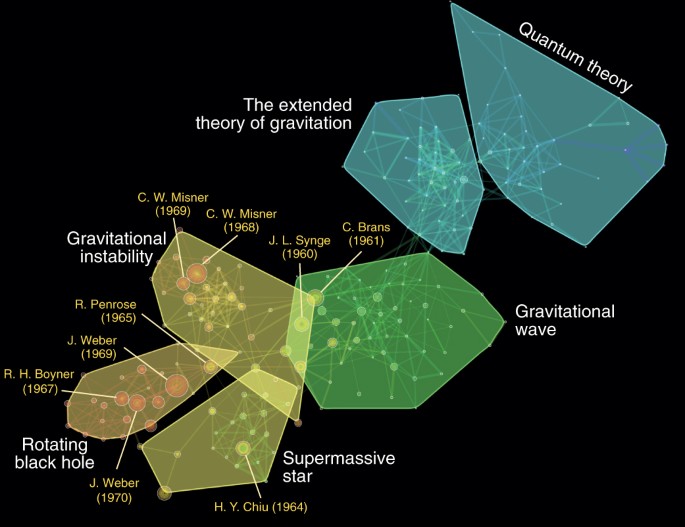
Astrophysicist Innovates Technique to Gauge Cosmic Ripples via Quasar Behavior
An innovative astrophysicist at the University of Colorado Boulder has unveiled a groundbreaking method for detecting gravitational waves—subtle ripples in spacetime induced by significant cosmic occurrences. Jeremy Darling’s unique approach, recently published in The Astrophysical Journal Letters, employs the observed dynamics of distant quasars to identify these elusive signals, presenting a fresh perspective for scientists to explore the universe’s gravitational echoes.
Darling’s method builds upon recent advancements by groups such as NANOGrav, which have detected indications of gravitational waves through pulsar observations. However, while those studies mainly focus on variations along Earth’s line of sight, Darling’s technique transcends a single dimension—broadening our observational scope to track movements throughout the sky. This multidimensional view may provide a more comprehensive understanding of gravitational waves and unveil essential insights into the behavior of supermassive black holes and the nature of our cosmos.
Unveiling the Gravitational Waves of the Universe
Gravitational waves emerge from significant cosmic interactions, such as the mergers of black holes. As these ripples traverse the universe, they subtly alter the structure of spacetime—similar to waves moving across the surface of an expansive, multidimensional ocean.
Envision Earth adrift in this ocean, continually nudged by waves flowing in diverse directions and frequencies. Conventional detectors, such as the Laser Interferometer Gravitational-Wave Observatory (LIGO), have successfully detected high-frequency waves from nearby events. Yet, the gravitational wave background—low-frequency waves from sources like colliding supermassive black holes in faraway galaxies—remains exceedingly challenging to identify.
This is where Darling’s research excels. Instead of relying on pulsars or lasers, he employs light from quasars—intensely bright and distant galactic centers fueled by supermassive black holes—as reference markers. By meticulously measuring minute variations in these light sources over time, the team can trace the spatial signature of long-wavelength gravitational waves.
Research Method and Major Discoveries
Darling’s investigation analyzed over one million quasars gathered by the European Space Agency’s Gaia spacecraft. Researchers compared 2,104,609,881 unique quasar pairings, searching for coherent motion patterns—a kind of cosmic dance—that could indicate the subtle influence of gravitational waves.
Noteworthy findings include:
– The analysis achieved measurement precision around ±0.005 micro-arcseconds squared per year squared—an unparalleled level of accuracy for optical observations.
– It set an upper limit for gravitational wave energy density at 0.0096, refining our understanding of the background noise of the universe.
– Notably, this study marks the first instance where optical wavelength data has outperformed radio-frequency methods in sensitivity for detecting gravitational wave-induced movements.
“Gravitational waves function in three dimensions,” stated Darling. “They stretch and compress spacetime along our observation path, but they also cause entities to appear to shift across the sky.”
This method effectively enables scientists to “observe” these gravitational waves by noticing how quasars seem to subtly “wiggle”—apparent angular shifts resulting from spacetime being deformed by passing waves.
Identifying Wavelengths Not Visible to the Eye
Quasars, positioned billions of light-years from Earth, act as some of the most stable reference points in the sky due to their tremendous brightness and distance. However, achieving enough precision to observe gravitational waves involves formidable technological challenges.
The scale of measurement is astonishing; it’s like tracking a human fingernail grow on the Moon—from Earth. To isolate quasar shifts induced by gravitational waves, scientists must account for every conceivable motion of Earth, from its orbit around the Sun to its trajectory within the Milky Way.
While the current analysis does not provide definitive proof of gravitational waves using this approach, it lays a solid groundwork, creating a precise and complementary observational tool that will enhance with time.
Future Prospects: Gaia and the Anticipation for 2026
Looking forward, the Gaia mission is set to unveil its next major dataset in 2026, which will encompass an additional 5.5 years of observations. This expanded timeframe will furnish researchers with a more comprehensive and richer collection of quasar movements to examine—potentially unveiling gravitational wave signals obscured deep within the cosmic background.
“If we can observe millions of quasars, then perhaps we can discover these signals hidden in that extensive dataset,” Darling noted. “Additional observations could uncover the fingerprints of the universe’s most monumental mergers and interactions.”
Beyond the astronomical ramifications, this method may also assist in validating or challenging new theories of gravity and spacetime. It serves as a potent avenue for understanding how the universe has expanded and evolved over billions of years.
Conclusion: A New Navigation Tool for the Cosmos
As gravitational wave astronomy evolves, Darling’s efforts signify a vital expansion of the